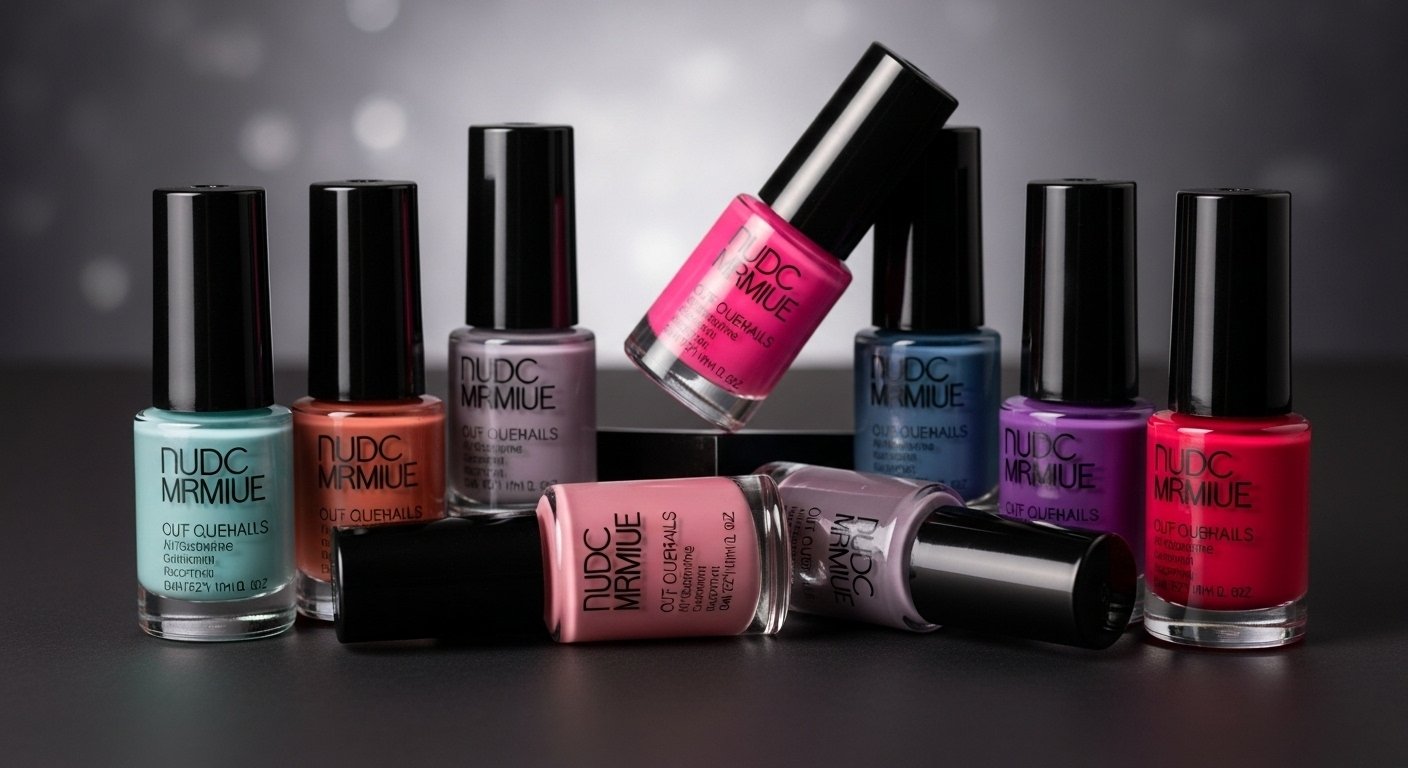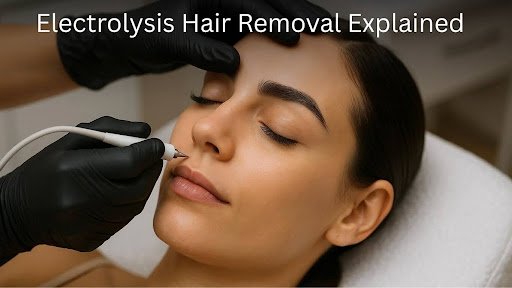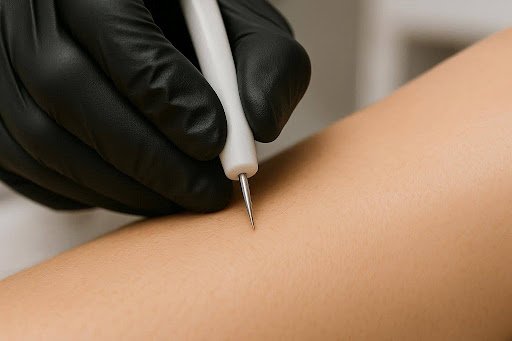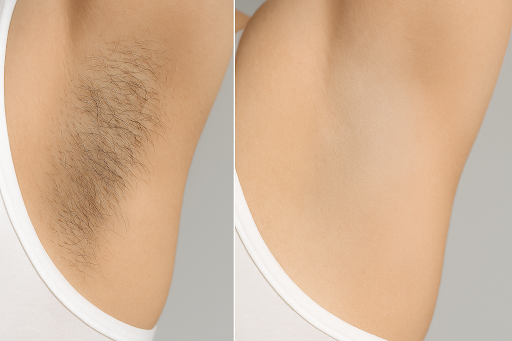Fashion
The Artistic Versatility of Tulle Fabric in Fashion and Decoration

Tulle fabric, celebrated for its delicate and airy quality, has enchanted the hearts of designers and artisans across the globe. From bridal veils to costume design, tulle’s ethereal nature makes it a staple in the fashion and decoration sectors. When diving into a project that involves tulle fabric by the yard, one can explore various creative avenues that this versatile fabric opens up. Beyond its whimsical appearance, tulle offers a plethora of functional characteristics that cater to innovative creations. Typically produced from synthetic materials like nylon or polyester, tulle’s fine mesh structure is perfect for achieving voluminosity without adding weight. This makes it an ideal choice for gowns, skirts, and even intricate decorations where an exquisite, flowing presence is desired. Its versatility extends to multiple industries, from high fashion and bridal couture to interior design and theatrical stages.
Historical Significance of Tulle
The roots of tulle, which originated in Tulle, France, transport us back to the 18th century. As the fabric gained traction, it became a symbol of elegance and sophistication, serving as a testament to fine craftsmanship. During the 19th century, tulle’s association with the opulence of court dresses and the elegance of ballerinas fueled its popularity, making it a staple in couture houses worldwide.
Throughout its history, tulle has been a canvas for creative expression, reflecting societal shifts in fashion and style. Iconic fashion moments have often been defined by spectacular tulle creations, demonstrating how this fabric has stood the test of time and fashion’s ever-changing trends.
Tulle in Contemporary Fashion
Fast forward to the present day, and tulle remains a beloved material in contemporary fashion, frequently gracing runways and red carpets. Designers appreciate its ability to contribute to avant-garde and traditional apparel, which can be used to craft everything from dramatic ball gowns to cutting-edge streetwear. The dynamic nature of tulle allows it to form striking silhouettes, adding movement and texture that captures attention on any fashion stage. Industry events consistently showcase Tulle’s creative potential, underscoring its enduring appeal. Modern designers play with layering, colors, and techniques, pushing the boundaries of how tulle can be re-imagined and redefining fashion norms.
Decorative Uses of Tulle
Apart from its sartorial applications, tulle is influential in event decoration. Its transformative power lies in converting ordinary spaces into ethereal environments. From weddings to children’s parties, decorators use tulle to create everything from romantic backdrops to playful canopy drapes. The lightness of the tulle makes it incredibly easy to manipulate, allowing event planners and DIY enthusiasts to experiment with various decorative strategies. Whether used as table runners or accent pieces, tulle enhances the visual appeal of events, offering a blend of elegance and creativity that leaves a lasting impression.
Tulle in Theatrical and Performance Settings
The ethereal charm of tulle is indispensable in theatrical performances and dance. This fabric is a favorite in costume design, not only for its aesthetic value but also for its practicality. Tulle costumes capture the essence of movement, enhancing the performance through their ability to flow and flutter with grace. Its usage is particularly prominent in ballet, where the classic tutu owes much of its appeal to tulle. The fabric lends itself well to layering, creating the perfect illusion of volume and lightness that seamlessly complements the dancer’s movements.
Caring for Tulle Garments
Despite its delicate nature, caring for tulle is straightforward, provided one follows a few essential guidelines. Hand washing in cold water with mild detergent is the gentle approach required to preserve the integrity of the material. Avoid wringing out tulle, as this can lead to stretching or tearing. Proper storage is essential; hanging tulle garments in a cool, dry, shaded space prevents wrinkles and protects the fabric from damage. With careful handling, the longevity of tulle garments is assured, allowing these creations to be enjoyed for years to come.
Eco-Friendly Options for Tulle
Rising environmental consciousness has highlighted the need for sustainable alternatives in fabric production, and tulle is no exception. Designers are increasingly turning to eco-friendly tulle, made from organic or recycled materials, to address ecological concerns without sacrificing aesthetic quality. Such innovations are recognized in resources like sustainable textile innovations, marking a positive shift towards sustainability. These environmentally friendly options ensure that creators can continue enjoying tulle’s benefits while contributing to a greener planet. As technology advances, the production of sustainable tulle will likely become more accessible, offering a responsible choice for eco-conscious designers and consumers alike.
Conclusion: Embracing Tulle in Creative Endeavors
From its rich history to its role in modern elegance, tulle remains a fabric that inspires awe and creativity. Its ability to convey lightness and sophistication across fashion, décor, and art speaks to its unmatched versatility. For those with a penchant for experimentation, tulle invites you to explore endless possibilities, promising a touch of enchantment and flair to any project. Whether designing a collection, planning an event, or partaking in theatrical creativity, embracing tulle opens up a world of artistic expression. As trends evolve, tulle adapts, reaffirming its place as an iconic and transformative fabric.
Fashion
Pro Nails Supply – How to Choose Professional Products for Salon-Quality Results

Professional nail care is both a creative craft and a technical process that requires the right products, tools, and techniques. For nail technicians and salon owners, selecting high-quality pro nails supply determines not only the durability of a service, but also the comfort, safety, and satisfaction of clients. Whether you’re running an established salon or just starting to build your professional kit, choosing your suppliers wisely is essential.
If you’re searching for online nail supplies, you can browse a wide range of professional formulas and equipment at online nail supplies to compare product lines, ingredients, and pricing suited to your service style.
The nail industry evolves quickly—new textures, hypoallergenic formulas, soft-gel systems, and structured manicure techniques appear each season. To stay competitive, professionals must prioritize quality, consistency, and safety in every product they use https://www.nailmarket-usa.com/
Salon Nail Supplies – Understanding What Defines Professional-Grade Products
When selecting salon nail supplies, it’s important to look beyond basic color selection or packaging aesthetics. The foundation of salon-quality performance lies in product formulation, chemical stability, curing reliability, and compatibility across system layers.
What Makes a Product “Professional”?
Professional-grade nail products typically provide:
- Stronger adhesion to prevent lifting and early chipping
- Stable viscosity for easy, controlled application
- Low-odor or low-toxicity formulas designed for regular salon use
- Reliable curing results under standard UV/LED lamps
- Durability that supports at least 2–4 weeks of wear
Key Product Categories Every Salon Needs:
| Category | Examples | Purpose |
| Nail Preparation | Dehydrators, primers, cuticle removers | Prepares nail plate and enhances adhesion |
| Building & Structure | Builder gel, acrylic systems, poly gel, rubber bases | Creates strength, extension, and shape |
| Color & Design | Gel polishes, gel paints, chrome powders, foils | Provides color expression and creative detail |
| Finishing & Care | Top coats, cuticle oils, buffers | Seals and protects finished manicure |
A well-curated salon kit ensures beautiful work, efficient service time, and repeat client satisfaction.
Supplies for a Nail Salon – Building a Functional, Reliable Professional Kit
Purchasing supplies for a nail salon is not a one-time event. It’s an ongoing process of refining, testing, and adapting to client needs and market shifts. When building or upgrading your salon inventory, it’s helpful to divide products into three categories: essential, specialty, and premium enhancements.
Essential Core Supplies
These form the backbone of most services:
- Base and top coats
- Rubber or builder bases
- Nail forms or soft-gel tips
- Quality UV/LED curing lamp
- Professional e-file with varied drill bits
- High-quality files and buffers
These items affect the technical success of every application.
Specialty Service Supplies
These support specific services and artistic differentiation:
- Acrylic powder systems + monomer
- Hard and soft builder gels
- Poly gel or acrygel hybrid systems
- Pigments, chrome, fine glitters, decals, stamping kits
These help expand your service list and client personalization.
Premium Enhancements
These elevate client experience and help build brand identity:
- Cuticle and hand care treatments
- Hypoallergenic or HEMA-free product lines
- Luxury top coat finishes (velvet, satin, glass shine)
- Branded salon accessories and packaging
Premium touches shape the emotional perception of your salon.
Pro Nail Supply – Choosing Suppliers You Can Trust
Finding reliable pro nail supply partners is just as important as the products themselves. A good supplier ensures stock consistency, authentic brand sourcing, clear safety information, and fast customer service.
How to Evaluate a Nail Product Supplier:
Look for:
- Ingredient transparency and safety certification
- Fresh stock rotation and visible expiration dates
- Consistent availability of frequently used products
- Reasonable shipping times and secure packaging
- Real customer reviews and professional-focused product descriptions
Avoid:
- Unbranded products with unclear formulations
- Sellers without contact information or customer service
- Stock that appears old, separated, or discolored
- “Too good to be true” pricing from unknown sources
A trusted supplier becomes a partner in your business growth, helping your salon maintain reliability and professional standards.
Maintaining Safety and Client Trust in Salon Environments
In today’s beauty market, clients are increasingly concerned about safety, allergens, and long-term nail health. Salons that demonstrate transparency and education gain stronger client loyalty.
Best Practices for Safe Nail Service:
- Keep tools sterilized between each client
- Track expiration dates on primers, gels, and solvents
- Offer patch testing for clients with sensitivity concerns
- Use ventilation or dust extraction systems when filing enhancements
- Avoid overly aggressive filing of natural nail plates
- Educate clients on proper aftercare to prolong their manicure
When clients feel informed, respected, and safe, they become long-term repeat customers.
Conclusion – The Value of Thoughtful Product Selection
Choosing the right pro nails supply is not just about finding attractive colors or popular brands. It’s about building a professional foundation that supports service consistency, business sustainability, and creative growth. High-quality salon nail supplies improve efficiency, reduce rework, and help ensure long-lasting results clients appreciate. A carefully selected set of supplies for a nail salon also protects natural nail health and reinforces your professional credibility.
Meanwhile, working with reliable pro nail supply distributors ensures that your materials are authentic, fresh, and supported by accurate product guidance. Over time, strong supplier relationships make inventory planning easier and significantly reduce downtime or shortages.
Above all, remember that clients return not only for the final look—but for the experience. When products perform well, appointments feel smoother, results look cleaner, and both you and your clients leave each session satisfied. Investing in quality today creates better artistry, better service, and a business that grows through trust and consistency.
Fashion
Santorini Greece Flying Dress Photoshoot – Turn Your Dream into Reality

There are few places on earth that combine beauty, romance, and light like Santorini. Perched high above the Aegean, this island turns every photograph into art. A flying dress photoshoot Santorini Greece is more than a session with a camera — it’s an experience of freedom, elegance, and emotion, where each breeze transforms fabric into poetry. Whether you’re celebrating love, adventure, or simply your own story, this once-in-a-lifetime experience captures moments that stay forever https://yannisvys.com/
Flying Dress Photoshoot Santorini Greece – Capture Magic Against the Blue Domes
A flying dress photoshoot Santorini Greece is about more than a picture; it’s about transformation. Beneath the radiant Greek sun, your gown flows in the wind, creating a vision of grace and confidence. Photographer Yannis Vysotsky, based in Santorini, has spent more than a decade mastering this craft — blending artistic vision with technical precision to reveal the island’s natural allure in every shot.
Each session is designed around your personality and mood. You’ll feel comfortable and confident as Yannis gently guides your movement, finding the perfect light and angle to highlight your natural expression. His passion lies in showing people as they truly are — radiant, powerful, and alive.
Santorini Dress Photoshoot – The Symbol of Movement and Emotion
During a Santorini dress photoshoot, you don’t just wear a gown; you become part of the landscape. The flowing fabric mirrors the motion of the sea and the rhythm of the wind. Every swirl, every captured second tells a story that’s both cinematic and intimate.
Yannis collaborates with a skilled female assistant who ensures the perfect motion of the dress, creating the signature “flying” effect. Whether the scene unfolds against the volcanic cliffs of Imerovigli or the narrow streets of Oia, each frame radiates warmth and authenticity. You’re not posing — you’re living the moment.
Clients describe the experience as empowering and emotional. Many arrive nervous, but leave glowing, amazed at how effortlessly their inner beauty shines through the lens.
Santorini Greece Dress Photoshoot – Where Style Meets Storytelling
When you choose a Santorini Greece dress photoshoot, you’re choosing more than a service — you’re entering a creative partnership. Yannis provides a curated selection of flying dresses in an array of colors: fiery reds, ocean blues, soft pinks, and deep emeralds. Each gown is designed for dramatic movement and elegant comfort, available in sizes XS to 3XL.
You can select the location that resonates with your mood — the serene calm of Pyrgos, the iconic white rooftops of Oia, or the sweeping caldera views of Fira. Yannis handles all logistics, from timing and lighting to coordination with stylists and makeup artists. His sessions are seamless, relaxed, and deeply personal.
Each photograph becomes a small masterpiece — a moment suspended between sky and sea, where every fold of the fabric tells its own story.
Santorini Photoshoot With Dress – An Experience for Every Occasion
A Santorini photoshoot with dress isn’t only for models or influencers. It’s an experience for anyone who wants to feel special and immortalize their time on the island. Couples book it to celebrate engagements, honeymoons, or anniversaries. Solo travelers see it as an empowering tribute to themselves. Families use it to mark milestones with artistry and joy.
Yannis’s portfolio captures all these emotions. From glowing sunset portraits to vibrant sunrise moments, his photography highlights how Santorini’s light embraces everyone differently. You will feel confident, cared for, and completely at ease — a combination that naturally creates unforgettable results.
Behind the Lens – Yannis Vysotsky’s Signature Style
Born in Ukraine and raised among the landscapes of Greece, Yannis Vysotsky brings a unique blend of cultural sensitivity and artistic instinct to every project. Since 2009, he has photographed more than a thousand flying-dress sessions, establishing himself as one of Santorini’s leading photographers.
Yannis’s approach is deeply personal. He believes that photography isn’t about posing — it’s about connection. By listening, observing, and responding to the natural flow of the moment, he creates images that feel genuine and timeless.
His professionalism and warmth have earned him glowing reviews from clients worldwide who describe him as patient, creative, and intuitive. Every session feels effortless because it’s built on trust and shared excitement.
What to Expect From Your Santorini Greece Flying Dress Photoshoot
Before the shoot, you’ll receive detailed guidance about locations, timing, and dress selection. On the day, Yannis and his assistant manage every detail — adjusting the gown, finding the best light, and ensuring your comfort.
The standard packages include:
- 1-hour shoot with 50 edited images – €420
- 1.5-hour shoot with 80 images – €550
- 2-hour shoot with 100 images – €670
Each package includes the rental of the flying dress and full professional assistance throughout. Optional services such as makeup, hairstyling, and extra locations are also available.
You simply arrive, enjoy, and let the island — and the wind — do the rest.
Why Santorini Is the Perfect Stage
Santorini is unlike anywhere else in the world. The white houses that spill down volcanic cliffs, the calm turquoise waters, and the play of sunlight and shadow make it an ever-changing canvas for a santorini greece flying dress photoshoot.
At sunrise, the light is soft and ethereal. At sunset, the island glows gold, turning every photo into a painting. Yannis understands how to use this light to sculpt emotion — turning fleeting moments into timeless treasures.
From the quiet corners of Imerovigli to the vibrant rooftops of Oia, each location tells a different story, yet all share the same magic that makes Santorini unforgettable.
Client Stories – Real Experiences, Real Memories
“You will feel like a goddess! It was the highlight of our trip.”
— Kelli, Imerovigli
“Yannis captured the magic of our proposal perfectly. The photos are breathtaking.”
— Johanna & Dennis, Fira
“I normally don’t enjoy being in front of the camera, but this felt natural and joyful.”
— Camille, Oia
These stories reflect what every client discovers — that a Santorini photoshoot with dress is not just about images, but about how it makes you feel.
Book Your Flying Dress Photoshoot Today
Booking is simple. Visit YannisVys.com, browse the portfolio, and choose your preferred package. Once confirmed, you’ll receive a detailed itinerary and personal guidance from Yannis himself.
Your santorini greece flying dress photoshoot is waiting — an unforgettable combination of artistry, emotion, and adventure. Whether you come alone or with someone special, these images will forever remind you how it feels to be truly alive.
Beauty
Electrolysis Hair Removal Explained: 10 Key Insights

If you’ve ever wondered whether there’s a truly permanent way to remove unwanted hair, electrolysis is one of the rare options that delivers. It’s a method that treats the hair at its root and offers long-term results that many other techniques cannot match.
Electrolysis hair removal is a permanent method that uses a fine probe and a small electric current to destroy hair growth cells within each follicle.
It works on all hair colors and skin types, unlike laser treatments that rely on pigment. Once a follicle is treated, the hair cannot regrow. It’s a safe, precise, and FDA-approved solution for lasting hair removal.
In this article, I’ll walk you through how electrolysis actually works, where it can be used, what to expect before and after a session, how many treatments you might need, and how it compares with other hair removal methods.
Electrolysis Hair Removal Explained: 10 Key Insights

Electrolysis hair removal is based on the simple principle of destroying the hair growth cells within each follicle so that they can no longer produce hair. It’s a meticulous, targeted treatment performed one hair at a time, offering precision and long-term results.
Here’s how the process works:
- A trained electrologist uses a fine, sterile probe that’s about the width of a hair strand. This probe is gently inserted into the natural opening of the hair follicle, not the skin, so it’s virtually painless when done correctly.
- A small electrical current is then delivered through the probe to the base of the follicle, where the growth cells are located.
- This current destroys or weakens the follicle’s ability to grow new hair. The treated hair is then carefully removed with sterilised tweezers.
There are three main electrolysis methods used in clinics:
- Galvanic (Direct Current): Uses a low-level electric current that causes a chemical reaction inside the follicle. It produces sodium hydroxide, which gradually destroys the hair growth cells. This method is slower but extremely thorough, ideal for coarse or stubborn hair.
- Thermolysis (High-Frequency Current): Uses short bursts of radio frequency to generate heat, which cauterises the follicle tissue in just a fraction of a second. It’s faster and often used for smaller areas like the upper lip or chin.
- Blend Method: Combines both galvanic and thermolysis techniques, delivering the chemical and heat effects simultaneously. This method is highly effective for a wide range of hair types and skin tones.
The choice of technique depends on your skin type, pain tolerance, and hair texture. A skilled practitioner will select the most suitable method for each client and even switch techniques across areas for optimal results.
Areas Electrolysis Can Treat
Electrolysis is incredibly versatile. Because it doesn’t rely on pigment (unlike laser), it can safely treat any hair colour from white and blonde to dark brown or black and all skin tones, including very fair or deeply pigmented skin.
Common treatment areas include:
- Face: Upper lip, chin, jawline, sideburns, cheeks, eyebrows
- Body: Underarms, arms, legs, chest, back, abdomen
- Intimate areas: Bikini line and Brazilian zones
- Other delicate areas: Fingers, toes, and around the nipples
This flexibility makes electrolysis a great option for people who may not have been good candidates for laser hair removal, such as those with light or grey hair, hormonal hair growth (like PCOS-related), or mixed hair types.
Benefits of Electrolysis Hair Removal
Many people turn to electrolysis after trying other methods like waxing, threading, or laser, and finding that regrowth or incomplete results persist. Here’s why electrolysis stands out:
- Permanent results: Electrolysis destroys the growth cells in the follicle, meaning that once treated, the hair doesn’t return.
- Clinically proven and FDA-approved: Electrolysis is the only FDA-approved method for permanent hair removal, a distinction that even laser treatments do not have.
- Works on all hair and skin types: Because it doesn’t depend on pigment, it’s effective on light, dark, coarse, or fine hairs, including blond, white, and red hair.
- Safe and precise: Modern electrolysis equipment and sterile probes make the treatment safe for almost all skin types, including sensitive areas.
- Excellent for smaller or resistant areas: It’s often used to “finish” areas where laser treatment has left behind lighter or finer hairs.
When performed by an experienced professional, electrolysis offers clean, lasting, and predictable results.
What to Expect During a Session
Here’s roughly what a client might go through:
Preparation:
- The area should be clean and free of makeup, lotions, or creams.
- Avoid waxing, plucking, or threading weeks ahead of treatment, so the follicle remains present.
During treatment:
- The technician inserts the fine probe into one follicle at a time.
- You might feel mild sensations, a heated or stinging feeling as the current is applied.
- The intensity is adjusted to your comfort and your skin’s tolerance.
Session length & frequency:
- Small areas (e.g. upper lip) may take 15-30 minutes.
- Larger zones (legs, back) could take much longer, or even be split across sessions.
- Treatments are spaced out over time so the skin recovers (often weekly or biweekly at first).
Side Effects and Safety
Because electrolysis works at the microscopic level, side effects are usually mild and temporary. Possible reactions include:
- Redness or slight swelling
- Light scabbing or crusting
- Sensitivity or tenderness
To minimize risks:
- Apply gentle aftercare (described below)
- Avoid picking scabs
- Use sun protection
- Follow the technician’s instructions
Electrolysis is generally safe for all skin types when performed by experienced professionals. For particularly sensitive skin or skin conditions, a consultation is always prudent.
How Many Sessions Are Needed?
There’s no one-size-fits-all answer. The number of sessions depends on:
- The size of the treatment area
- Hair density (how many hairs per follicle)
- The hair growth cycle and how many hairs are active
- The type of hair (thicker hair may need more work)
On average, many clients begin to see noticeable hair reduction after 10-20 sessions (especially for facial zones). For larger areas or dense hair, it might take 20-30 or more.
Each session chips away at remaining active follicles until very few remain.
Electrolysis vs. Other Hair Removal Methods

Here are the main distinctions:
Electrolysis vs Laser:
- Laser uses light energy to target pigment; it’s great for dark hair on light skin but less effective on light or fine hair.
- Electrolysis works on all hair colors and textures.
- Only electrolysis is recognised (by the FDA in the U.S.) as a permanent hair removal method.
Why choose electrolysis over others:
- If your hair is light, grey, or fine
- If the laser hasn’t worked well for you
- If you want a truly permanent solution and are willing to invest time
Waxing, threading, and shaving are all temporary. They don’t destroy the root and hair will regrow repeatedly.
Aftercare and Recovery
Proper aftercare helps your skin heal and reduces the risk of complications.
Immediately after treatment:
- Apply a cold compress or soothing gel
- Avoid sun exposure (use SPF)
- Don’t pick or scratch any scabs
- Use very gentle skincare (mild cleansers, avoid active ingredients)
Long-term care:
- Continue to protect your skin from UV
- Avoid harsh treatments or exfoliants in the treated area
- Maintain hydration and gentle skin products
- Return for follow-up sessions as advised
Conclusion
So, does electrolysis work? Yes. When performed by a qualified professional, it’s one of the few proven methods for permanent hair removal. Electrolysis effectively destroys the hair follicle at its root, preventing regrowth for good. It’s safe, versatile, and ideal for all skin tones and hair types, including light or fine hair that laser often misses.
If you’re considering electrolysis hair removal in London, choose a reputable clinic with experienced practitioners who can assess your needs and create a tailored treatment plan. With patience and consistent sessions, you’ll achieve smooth, long-lasting results you can feel confident about.
FAQs
Is electrolysis painful?
You may feel mild heat, tingling, or a slight stinging sensation when the current is applied. Most people say it’s tolerable. The technician can adjust the intensity to your comfort.
Is it safe for sensitive skin?
Yes, when performed correctly. For very sensitive or reactive skin, start with small test areas and notify your technician of any skin conditions. Proper aftercare is key.
How long does each session take?
It depends on the area size. Small areas (upper lip, chin) may take 15–30 minutes. Larger zones (legs, underarms) can take an hour or more. Your technician will estimate based on your hair and skin.
Can electrolysis be done on all body areas?
Yes, it’s suitable for nearly any part of your body, including face, bikini area, underarms, legs, arms, and back.

 Blog10 months ago
Blog10 months agoHow to Deal with Scabies While Traveling

 Travel10 months ago
Travel10 months agoRichmond, Virginia Street Art Guide

 Travel10 months ago
Travel10 months agoPerhentian Islands: How to Get There, What to Expect, & More

 Travel10 months ago
Travel10 months agoHow to Live in Your Car in New Zealand

 Travel10 months ago
Travel10 months agoSouvenir in Nepal: A Guide to Unique Handicrafts and Cultural Treasures

 Travel10 months ago
Travel10 months agoVegan Guide to Dining Out in Richmond, Virginia

 Food10 months ago
Food10 months agoVegetarian Food Nepal: A Journey into Flavorful Plant-Based Cuisine

 Travel7 months ago
Travel7 months agoA Local’s Guide to Sanibel Island, Florida















